Text
Bonus Episode: Interview with Get Behind Fanny co-host, Dr. Kristen Hillaire Glasgow
The Fanny episode of Broken Buttons was the most popular to date. I heard from so many people who were newly introduced to this phenomenal 70s all-female pioneering powerhouse. In this special bonus follow up episode, I speak with Dr. Kristen Hillaire Glasgow, historian by trade, host of the Get Behind Fanny podcast and the daughter of Fanny’s manager, Roy Silver. It was such an interesting, fun discussion. We talk about Fanny myths and misconceptions (including some information that I got wrong), the new Fanny documentary, Kristen's childhood memories with Fanny, what's next for the band and much more.
Listen to the new episode on all podcast platforms here!

#fanny#getbehindFanny#music podcast#music blog#70s rock#David Bowie#music history#interview#rock#Broken Buttons#underappreciated#underrated#fanny: the right to rock
0 notes
Text
Broken Buttons’ Favorites: Jean Grae
#Jean Grae#Broken Buttons#music podcast#music history#Mr. Lif#Mr. Len#indie#underground rap#hip hop#Quelle Chris#Attack of the Attacking Things#Jeanius#Babygrande#The Evil Jeanius#talib kweli#playlist#Spotify
0 notes
Text
Broken Buttons’ Favorites: Eleni Mandell
#Eleni Mandell#playlists#music podcast#music history#indie#Tom Waits#Chuck E. Weiss#Spotify#Broken Buttons#X#Thrill#Wishbone#Country for True Lovers#country
0 notes
Text
Jean Grae: Top Tier Emcee and Polymath Extraordinaire
This post is a near- transcript of the Broken Buttons: Buried Treasure Music podcast (episode 5, side B). Here you’ll find the narration from the segment featuring the underground rap legend Jean Grae, along with links, videos, photos and references for the episode.
Listen to the full episode on Spotify, Apple, Anchor or Mixcloud.

Your favorite band announces they’re working on a new album. Little by little information starts to trickle out about the upcoming project. Maybe the band gives clues to the style and feel of the new tunes they’re working on. Perhaps they give an interview citing some of their recent influences and inspiration. They might even preview the album artwork or the title or the track listing. Then suddenly, with months to go before the official release date, someone tweets that an advance version of the album has been leaked. The link’s right there. Do you click it? Do you listen to this unofficial version of the album that you’ve been dying to hear?
It’s been happening since the album rose to prominence in the sixties. Bob Dylan’s Great White Wonder is said to be the first album leak. Originally thought to be a new album he was working on, the Great White Wonder turned out to be a poor fidelity version of songs that Dylan recorded with The Band, mostly demos of songs he recorded to pitch to other artists that would eventually end up on The Basement Tapes, cobbled together with early demos and other random outtakes.

In the case of Dylan, it’s unlikely the Great White Wonder leak hurt him financially in any way. In fact, it likely just created more buzz and built his mythos during a time when Dylan himself was in seclusion.
And today, leaks are often seen as no different from official releases of early singles from an artist’s upcoming album. Streaming has changed everything. Die hard fans are still going to buy the music, if that’s what they’re into. Good new music is going to generate buzz and sell concert tickets and merch, hopefully. I myself rarely listen to singles from established artists I like, if I can avoid it. There’s something about sitting down and listening to a new album from front to back. I’m not big on listening to sub-par versions of material that will get an official release. I can wait for the real deal. Rare tracks that have never been released, or are long out of print, that’s a different story.

But there was a time, not that long ago, when an advance album leak could significantly cut into an artist’s income. Or at least that was the prevailing fear from the music industry. For mega artists, the damage was arguably immaterial. The Eminem Show leaked in May 2002 and still went on to sell more than 10 million copies when it was officially released. Still, that didn’t stop superstars from going to extreme lengths to prevent album leaks. The insanely anticipated Jay-Z/Kanye West collaboration Watch the Throne went next level Alias spy tech with their security, holding all recording sessions in secret hotel room locations with private security. All producers had to deliver beats in person—no digital exchange of any kind. The masters were not delivered until days before the official release and even then, Engineer Anthony Kilhoffer personally transported the material on encrypted hard drives protected by biometric fingerprint readers.
But what about new and emerging artists? They can’t afford James Bond gadgetry and personal SWAT teams. For a new artist with good buzz building, an ill-timed advance album leak could be a death blow. In the CD and MP3 era, it could drive a label to completely ratchet down their support and back way off of future investments. Why sink money into producing and promoting something that everyone who’s interested in already has?
Jean Grae was and is an unparalleled talent. She’s a super hero in more than just name and despite all her powers even she couldn’t fend off all the evil doers bent on being shitty and doing unwarranted damage to her promising career trajectory.
And why? Ignorance. Greed. Jealousy. Envious because they’re not like Jean.
youtube
That was Not Like Me by Jean Grae from her second studio album, This Week, officially released in 2004. And officially leaked in 2004. Not only was This Week leaked to the internet in advance of it’s scheduled date, but so was Jean’s third album, Jeanius, on the same day! This Week eventually got a proper release that year, but Jeanius, which is even better and still stands as one of her best releases, sat in limbo for four years before finally seeing the light of day.
This is what I’m talking about. It’s not easy to capitalize on your buzz as an emerging artist when all of your hotly anticipated new material is flooding peer-to-peer file sharing services and music blogs. This is what Jean Grae has been up against, and despite it all, she continues to persevere.
But let’s go back to the beginning because every hero has an origin story.
Jean Grae has not always shared a name with her X-Men counterpart boasting omega-level telepathy.

Jean was born Tsidi Ibrahim in Capetown, South Africa on November 26th, 1976. Her parents were prominent South African jazz musicians Sathima Bea Benjamin and Abdullah Ibrahim. Her parents moved to New York City shortly after Jean was born. She attended LaGuardia High School. Yes, that LaGuardia.
She began developing her skills as a writer and emcee and was quickly recognized as a superior talent. George Martinez, artist and entrepreneur, recruited her for a five song demo that his group Ground Zero was working on. At this time Jean was using the Name What? What? The demo received critical acclaim and was even the first release ever mentioned in The Source’s Unsigned Hype section.
From the Unsigned Hype feature in The Source:
“The demo they’ve produced shows some real talent on the lyrical and musical ends. The sound is on the funky, hardcore tip, but is not just another run-of-the-mill James Brown cut. With the right guidance there’s potential for rap success here.”
Jean, then What? What?, eventually joined the hip hop group Natural Resource. This material also garnered rave reviews. She began to really develop her production skills during this time, under the pseudonym Run Run Shaw. And she just kept getting better and better as a writer and emcee.
Natural Resource broke up in 1998, and Jean decided to go solo. And now she was Jean. I know I’ve been calling her Jean this whole time, but at this point she formally started going by the name, Jean Grae.
Some of Jean’s best material is not available on streaming. It’s actually completely out of print. Her first solo album, Attack of the Attacking Things, can be tracked down on YouTube, or you can snag an old copy from Discogs.
Fortunately, Jean has so much good material that there is plenty readily available. You can buy all of her recent releases directly from her on BandCamp. Like this song, which is part of an EP trilogy she released in 2013 called Gotham Down. Kill Screen uses the theme of the great Fistful of Quarters documentary about competitive Donkey Kong players and weaves a narrative that, well, you’ll see.
youtube
Jean Grae with Kill Screen from her triple EP Gotham Down.
After Jean’s second and third albums were leaked prematurely, she was understandably frustrated. She had reached a creative peak with that third album, Jeanius, a collaboration with 9th Wonder for the label Babygrande Records. Not only did it get blasted to the world for free, but the official release languished for four years while Jean and the label fought to clear samples, eventually choosing to rerecord many of the parts they figured were nearly impossible to get approval for.
Dean Van Nguyễn did an excellent story on the troubled project for the website Passion of the Weiss last year. From Dean’s article:
“But as Jean Grey once telepathically told Charles Xavier, “If you knew… everything… what is about to happen wouldn’t be happening, you bastard.” Even the most powerful among us can’t boast perfect clairvoyance. Especially not in the mid-2000s, when the free-for-all, peer-to-peer internet could cause a band like U2 to threaten alterations to their release schedule and throw Fiona Apple’s career into chaos. Equally, Grae and 9th couldn’t have known when these idyllic sessions wrapped that the fruit of their creativity was fated to walk a cursed path.”
“We had a lot of issues and clearing samples when putting it out on a major when we were doing in,” she said. “Now, I figure it would be dope to go back, because there’s so many things that got cut from it: Everyone talking in the background, the little things that happened, and the actual feel of the original samples versus playing stuff over the beats.”
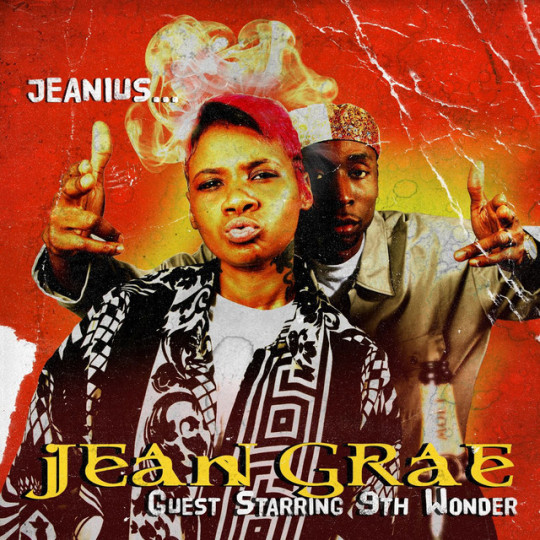
Even though Jeanius finally got the real release it deserved, the revised version with rerecorded and missing parts was thought to be overly produced and slightly inferior to the leaked version that preceded it by four years.
Demoralized, Jean split from Babygrande, however, they didn’t exactly split from her. In 2008, dumping a barrel of salt into her fresh wounds, Babygrande culled unfinished vocal tracks that Jean had recorded over the years and shipped them over to up and coming hip hop production duo Black Sky Death. They Frankensteined together a brand new Jean Grae record, completely without her permission, and called it The Evil Jeanius. The album is predictably uneven, but still has stand-out gems because, ya know, Jean’s good at what she does.
When asked about the release during a 2014 Reddit Ask Me Anything session, Jean responded:
"It was a shit thing to do. Fuck babygrande."
After a short tenure with Talib Kweli’s Blacksmith Records, soured on the industry and pissed off at, well, people, Jean Grae announced her retirement from music. She didn’t stay retired for long, fortunately. She decided to go completely independent. She went really really independent.

In September of 2008, she posted an ad on Craigslist offering to pen 16 bar rhymes for $800. For real. This is from the actual Craigslist ad.
Out the hands of big business, straight to you.
So.. you got beats?? cd’s?? envelopes?? yousendit?? protools?
Whatever you got I’ll try and find a way to work with it.
I work fast, so you’ll have em fast.
16’s for $800 (cause 8’s half of 16..ooh math! math yo!) and yeah..we can negotiate.
Maybe you want a hook.. or 8 bars. or an into.. or outro.. whatever.
Figured we’d take advantage of our online community, since some of us may not get the chance to meet in person.
Kinda stick it to the man too. Who doesn’t like that?
You send it to me.. You know you gotta pay me first.. lol … Trust me, if I don’t do it you can find me, right? And talk crappity crap about me, cause it’s the internet.. I like the honor system and was raised on it.
Sooo… lets have some fun with it.. for ONCE in a long time.
Once you got it, you got it. Not looking for any extra publishing or anything..
Like Half Baked, “Go! Sell Weed!”
Just decided to do this today, so we can do deposits or western union.
I like working with people who love doing this and dont get enough shine.. plus, I like money just coming to me.
I’ll put different songs up on my myspace everyday and change you guys to my top friends.
I’m sure I’ll find some producers/emcees I didn’t even know about and that would be awesome.
ok go!
EMAIL THE ADDRESS AND LETS GET GOING.
THIS IS REAL, IT’S ME.. I’M BLOGGING ABOUT IT NOW ON MY MYSPACE.
LOVE YA, HOPE TO HEAR FROM Y’ALL SOON.
LET’S KEEP THIS SHIT FUN AND CREATIVE AND TAKE ADVANTAGE OF THE DIGITAL AGE.
JEAN
Since then, Jean has taken to releasing her music direct to fans via BandCamp and doing whatever the hell she wants. Seriously. The releases mix genres and frequently defy categorization entirely, but they are all of the high quality you’d expect from a dependable superhero like, Grae.
An audiobook. An R&B EP. A Christmas comedy thingy. A trio of instructional EPs for adults about how not to be a dick.
Here’s a song from her 2016 EP, jeannie.
youtube
One of the many releases you can pick up directly from Jean Grae’s BandCamp page.
Clearly Jean did not let the music industry BS keep her down. As of this recording, Jean has nearly 50 releases available on Discogs. That’s a combination of studio releases, mixtapes, EPs, singles, and compilations. That doesn’t even begin to count her ace guest spots on other artists’ material.
She’s also prolific in many other areas. Writer, director, producer. She’s guest starred on the TV show 2 Broke Girls. She starred in her own sitcom, Life with Jeannie. She’s an in-demand speaker. She penned multiple comic series for Marvel. She’s written and staged a series of plays that present sequels that never actually happened, like Ghostbusters 2.5. In recent years, she’s been very active in comedy and improv.
But somehow the music always pulls her back in.

In 2018 she received some long overdue recognition and some of the best press of her career for her team up album with husband Quelle Chris, Everything’s Fine. The album scored a Best New Music designation on Pitchfork. From the Pitchfork review.
“Part biting satire, part cognitive behavioral therapy, their new collaborative album, Everything’s Fine, is a gorgeous consideration of how simply existing can beat the “fine” out of us.”
“There are ways to hear this album as both damning or redemptive, depending on the perspective. But it is never sanctimonious, and it is constantly breathtaking. Grae and Chris aren’t encouraged by the fire raging around them, but they soldier on, as we all must, finding a sort of black humor in the idiocy, the chaos, and the sheer absurdity of it all. Sometimes the only way to survive is to be “fine.” Sometimes all you can do to be fine is laugh.”
Let’s hear a track from Everything’s Fine. Here’s Peacock.
youtube
That was Peacock from Everything’s Fine.
Jean continues to do whatever she wants and do it all well.
So what have we learned? Jean Grae has and will persevere. Go up against her and you will be defeated. A truly gifted emcee who deserves a wider audience. A modern day polymath, if ever there was one. The great and powerful, Jean Grae.
References and other stuff:
Pitchfork feature on Jean Grae that highlights 8 standout tracks
Bandcamp feature focusing on various newer releases that Jean has released through her Bandcamp page
NPR Microphone Check discussion with Jean Grae, Ali Shaheed Muhammad and Frannie Kelley
Good write up on Jean’s Bootleg of the Bootleg
Believer feature where Jean answers reader’s questions
The excellent Passion of the Weiss feature by Dean Van Nguyen that I quote in the episode. Pop Lock These Words: The Story of Jean Grae’s Jeanius
Life with Jeannie on YouTube
Hip Hop Scriptures biography on Jean
New York Times feature on how Jean spends her Sundays. This was around the time of Life with Jeannie launching.
#music podcast#music history#Jean Grae#hip hop#underground rap#Broken Buttons#Talib Kweli#Mr. Lif#Quelle Chris#Pitchfork#Life with Jeannie#podcast#podcasting#vinyl#bootleg#leak#Bob Dylan#Bandcamp#music#music recommendations#music suggestions#music discovery#indie#now spinning#now playing#podcast community
0 notes
Text
Eleni Mandell: L.A. Singer-Songwriter with Smoky Chrissie Hynde Vocals and a flair for Tom Waits’ Influenced Experimentation
This post is a near- transcript of the Broken Buttons: Buried Treasure Music podcast (episode 5, side A). Here you’ll find the narration from the segment featuring the L.A. singer-songwriter, Eleni Mandell, along with links, videos, photos and references for the episode.
Listen to the full episode on Spotify, Apple, Anchor or Mixcloud.

Have you ever bought the wrong record? Like, you intended to buy something that sounded like one thing and you accidentally grab something that sounds very different.
I don’t know if this happens anymore, but I believe it was quite common years ago. Imagine hearing an artist on the radio and being blown away. You go to the record store, find the plastic divider with the name of whom you’re looking for, but you can’t remember the name of the album, or even the song. Remember, you don’t have a tiny computer in your pocket. You’re too nervous to ask the store clerk for fear of looking stupid. So you roll the dice.
“I know it was someone called Neil Young, but there are a thousand Neil Young records here.”
“Hey, this pink one looks cool.”
That exact scenario didn’t happen to me, but that album, Neil Young’s Everybody’s Rockin’, happened to be the most played Neil Young album in my house growing up, so for years I thought Neil Young was a rockabilly revival act. In reality, that was one of several oddball records Young released during a tumultuous period with his record label to fulfill his contract demands. I still love that record.

Eleni Mandell did live out the scenario of buying the wrong record though. She shared the story during a segment of the show Bullseye with Jessie Thorn, where she describes seeing Tom Waits on MTV late at night—back when MTV still cared about music. It was either 120 minutes or IRS’ The Cutting Edge. This would have been around 1984 or 1985, so right around the time of Wait’s masterpiece Rain Dogs. When she went to the record store though, she picked up the 1976 Tom Waits’ Asylum release, Small Change instead. Now Small Change is still a great Tom Waits album, but it sounds nothing like the drastically reimagined sound and musical approach he had begun to employ starting with 1983’s Swordfishtrombones. Something Tom Waits called his “junkyard orchestral deviation.” The spare, off-kilter percussion. Moaning trombones and muted trumpets. Marimba. Plenty of marimba. Experimental instruments mixed in everywhere. Megaphones and CB radios. Trash can lids.
This is the sound Eleni was looking for.
Instead she got lush strings. Delicate piano. Cinematic swells and a melancholy wail.
She got this.
Still awesome, but not the same. She credits the experience with changing her life. She grew to love both sides of the Tom Waits coin. The jazzy piano man in the smoky, whiskey-drenched nightclub and the eclectic, experimental carnival barker that she had her first encounter with on late night MTV.
You can hear that deep appreciation and influence for the full Tom Waits spectrum injected and swirling through Eleni Mandell’s own spectacular catalog that spans more than 20 years now.
She’s got plenty of experimental Waits, especially in her early catalog.
And quite a bit of the jazzy nightclub vibe.
There’s also plenty of folk-y Eleni mixed in, and even some country.
You’ll notice that Eleni’s voice doesn’t sound like Tom Waits though. Did you notice that? It’s less of a deep, gravelly howl and more of rich Chrissie Hynde croon. Spin compared her to Chrissie Hynde and PJ Harvey. Rolling Stone compared her captivating melodies and witty lyricism to early Elvis Costello.
While she doesn’t have the Tom Waits’ wail, she does specialize in his particular brand of character song-study. Like this first song we’re going to hear. The first track off of Eleni Mandell’s second album Thrill. Released in the year 2000. This is Pauline.
youtube
Pauline, from Eleni Mandell’s second record, Thrill. So how did this remarkably unique singer-songwriter get her start and pull together so many interesting influences to create the sound we just heard.
Eleni grew up in the Sherman Oaks region of the San Fernando Valley, Los Angeles. She started playing music when she was just 5, beginning with the violin and then piano. Eleni didn’t love playing either, but continued to take lessons until she was thirteen. She remembers wanting to learn to write songs early on, but didn’t have the first idea of how to approach it, especially on violin. She jumped from violin and piano to guitar as a teenager. Her parents exposed her to a variety of musical styles. Her mom would take her to musicals and her dad, a serious record collector, played her Hoagy Carmichael and plenty of jazz standards. She loved the Beatles and remembers Diana Ross making an early impression.
Another early life changing moment came when she discovered the Los Angeles punk band X.
X were huge in LA, and their first album (called Los Angeles) was the first record Eleni ever owned. Or maybe the first she asked to own. The first record she was ever given was Shaun Cassidy’s greatest hits for her 4th birthday. The first she ever purchased with her own money was X’s third release, Under the Big Black Sun. She tells a story of when she was out record shopping at a place called Aron’s Records, located on Melrose, and to her utter befuddlement came face to face with John Doe, lead singer of X. He was shopping for records too. She quickly snapped up a copy of the band’s third album and asked John to sign it. He did. She still has the signed album, which reads “Yours” complete with a big X “-John Doe.” That was the last autograph she ever asked for. It was not, however, the last time her path would cross with that of the band X.

When she was a little bit older, she met Chuck E. Weiss, songwriter, rock n’ roller, beat poet and peculiar Tom Waits associate. Also the subject of the song, Chuck E.’s in Love.
Yes, that Chuck E. Weiss. Waits was in a relationship with Rickie Lee Jones. Waits, Jones and Weiss all lived at the seedy Tropicana Motel in Los Angeles. One day Weiss up and left out of nowhere. Some time later Chuck E. called the apartment where Jones and Waits were living. He explained to Waits that he had moved to Denver because he had fallen in love with a cousin there. Waits hung up the phone and announced to Jones, “Check E.’s in love. Rickie Lee Jones liked that so much that she it turned it into the song we just heard.
Who is this episode about again? Oh, right. Eleni Mandell. Anyway, Eleni Mandell met THAT Chuck E. Weiss when she was not yet 21. Still, she had a friend who was able to get her into The Central, a Sunset Strip club that would later become The Viper Room. This would’ve been around 1990. Weiss was playing there every Monday.
Here’s how the write up on Eleni’s original website describes her first encounter with Weiss.
“The first time she ever saw Chuck E. Weiss perform, he walked right up to her and smiled like a cross between The Cheshire Cat and an escaped mental patient. She met him a month later at Musso and Frank’s.”
Eleni says she was at the famous Hollywood restaurant and recognized Weiss. She worked up the courage to approach him and told him how much she loved his show. He asked if she wanted to accompany him to meet up with a friend at Canter’s Deli. She agreed. When they settled into one of the landmark eaterys iconic red, vinyl booths in walked her hero. Tom Waits. What a night. Tom asked Chuck how he and Eleni had met.
“Hebrew school,” he declared.
Here’s a tune from Eleni’s debut album, Wishbone, released in 1999. This is Sylvia.
youtube
From Eleni Mandell’s first album, Wishbone, that was Sylvia.
Under Chuck E. Weiss’ mentorship, produced by Jon Brion and self-financed by Mandell, Wishbone, as well as her next several records, received strong reviews and drew comparisons to Waits and PJ Harvey in style.
Before Weiss mentored Mandell, he hired her as a door person at his club. She said he would test her to see how tough a door person she was by trying to grab money out of her hand. Weiss would continue to mentor Eleni over the years and they’re still friends to this day.
For her fourth album, Mandell shook things up by diving into traditional country. A mix of covers and originals, 2003’s Country For True Lovers is an exciting update to her sound. And one of her life changing moments came full circle. Weiss introduced her to former X guitarist Tony Gilkyson, who produced the project. She also stacked the sessions with all star players, including Nels Cline from Wilco, and another X hero, drummer D.J. Bonebreak.

Eleni continued to mix and mesh genres on her next release, 2004’s Afternoon.
From the No Depression review of that album:
“Last years Country For True Lovers found Los Angeles chanteuse Eleni Mandell turning her sights on twang rather than her previous more PJ Harvey-oriented material, and she received plenty of critical acclaim in the process, sharing the LA Weekly 2003 songwriter of the year award with the late Elliot Smith.”
“On Afternoon, her fifth album, Mandell combines her love of various genres, including country, pop, jazz and rock, to stunning effect. Produced by Joshua Grange, who also lends his considerable talents on guitar, pedal steel, Hammond organ and piano, Afternoon mostly takes the slow and sexy approach. I’ve Been Fooled and Can’t You See Im Soulful give Mandell the chance to show off her breathy but passionate alto, which can devastate in a heartbeat.”
“Mandell does rock out from time to time, as on Easy On Your Way Out, which has a grungy Elvis Costello-gets-on-with-Liz Phair feel to it. I wanna be your afternoon/I want you coming back for more, Mandell sings on the sorta fun/sorta sad title song.”
She can also write catchy singles. Like this song from Afternoon, “Let’s Drive Away.”
youtube
That was Let’s Drive Away from Eleni Mandell’s fifth album, Afternoon, released in 2004. That song was also featured on the TV show, Weeds.
And here comes the challenging part of covering an artist like Eleni Mandell, who’s put out consistently solid albums for over two decades. There’s not enough time to feature all the good stuff she’s produced, but trust me, over her eleven albums, she always delivers. From the diverse shifting sounds of Artificial Fire [play clip] to the smooth and breezy Dark Lights Up [play clip], Eleni whirls a magical combination of jazz, folk, pop, country and rock, with just enough experimental twists to keep everything fresh.
She’s also branched out from her solo artist gig to release two albums with her band The Grabs. The Grabs allows her to exercise more of her pop side and features Eleni on vocals, Blondie bassist Nigel Harrison, and Silversun Pickups’ drummer Elvira Gonzalez.
And, she’s also released records with the Andrews Sisters inspired supergroup, The Living Sisters, with Inara George, Alex Lilly and Becky Stark.
youtube
I’d recommend checking out all of this.
So now that we’ve established that the Eleni Mandell road is paved with the goods, let’s skip ahead to focus on her most recent album: 2019’s Wake Up Again.
Here’s what Eleni and her website have to say about the latest release:
“For two years or thereabouts,” Mandell says, “I taught songwriting at two colleges and a women’s prison.”
The prison gig came about via Jail Guitar Doors, the organization founded by Wayne Kramer, guitarist of the vaunted Detroit band MC5, in partnership with English musician Billy Bragg. “I don’t know why exactly I was drawn to that work,” Mandell says. “But I had a family member who had been in prison in the 1940s. He wasn’t around when I was growing up, but that sort of fascinated me and I was always curious about what kind of person disappears and what kind of person commits crimes — what are they thinking?”

Working with the inmates also provided many epiphanies for her as a person, and proved fertile for her as an artist, as captured in the 11 songs on this album, her 11th studio release. In many ways it’s the culmination and fulfillment of all the strengths as a writer and performer going back to her start under the tutelage of Chuck E. Weiss, Tom Waits and other top chroniclers of people in the shadows.
“I really enjoyed it,” she says. “I was inspired by the stories, and surprised by the laughter I heard there. And I shouldn’t have been surprised, but I was, by how many different kinds of people were there: teachers, lawyers, nurses, and also people who grew up in poverty.”
Here’s a song about one of the woman she met during those songwriting classes she taught. This is Evelyn.
youtube
Evelyn from Eleni Mandell’s most recent album, Wake Up Again. Another great addition to her expansive, impressive catalog. The album is filled with rich character studies and deeply personal self-examinations.
Her early Tom Waits inspiration continues to ignite and propel her, even after 11 albums. Only now she can call Tom a longtime friend.
And she went from obsessive punk rock X fan to counting a member of X as a member of her own band. What a cool, thrilling ride she’s had so far. Eleni Mandell.
References and other stuff:
Eleni interview with Luxury Wagers
Eleni interview with Mr. Bonzai
Eleni interview with Tyler Pollard on Timeline
The bio from Eleni’s current website has a great write up on her most recent album and I quote from it in the episode.
No Depression review of Afternoon that I quote in the episode
Here is the original bio from Eleni’s old website that is now archived. I also quote from this
Eleni has been featured on NPR segments over the years. I did not use anything directly from these, but they are good and informative
Pop Matter review of Dark Lights Up
Good L.A. Times article about Eleni teaching songwriting to female inmates and her latest album
#Broken Buttons#music podcast#music history#Eleni Mandell#indie#folk#country#punk#X#Tom Waits#Chuck E. Weiss#Chrissie Hynde#Pretenders#Living Sisters#The Grabs#P.J. Harvey#experimental#vinyl#podcast#podcaster#podcast community#now playing#now spinning#music blog
1 note
·
View note
Text
Episode 5 is Live! Eleni Mandell & Jean Grae

Episode five of Broken Buttons pays tribute to two artists who have consistently released excellent material for over two decades and they're both still going strong. "Side A" features Eleni Mandell, a Los Angeles singer-sonwriter with smoky Chrissie Hynde vocals and a Tom Waits and P.J. Harvey influenced flair for experimentation and genre-shifting. For fans of Tom Waits, P.J. Harvey, Chuck E. Weiss, Sam Phillips, Inara George, X, Lucinda Williams. "Side B" highlights the career of Jean Grae, one of the best and most gifted emcees ever, as well as a true polymath and all-around super hero when it comes to writing, directing, producing and comedy-ing. For fans of Mr. Lif, Talib Kweli, Queen Latifah, 9th Wonder, Mr. Len, Quelle Chris, Lupe Fiasco.
I’ll post links, photos and references shortly.
Listen on Spotify Premium or Mixcloud to hear full songs, otherwise short clips are played for educational purposes on Apple Podcasts and other places. @brokenbuttons0 on Twitter and Instagram.
#Broken Buttons#music podcast#music history#Eleni Mandell#Jean Grae#indie#hip hop#underground#underground rap#vinyl#podcast#podcaster#podcast community#Tom Waits#Chuck E. Weiss#Mr. Lif#Quelle Chris#Spotify#Apple podcasts#music#vinyl lover#vinyl collection#now spinning#now playing
0 notes
Text
Broken Buttons’ Favorites: Klaatu
1 note
·
View note
Text
Broken Buttons’ Favorites: Emitt Rhodes
1 note
·
View note
Text
Klaatu: Could They Have Been The Beatles Secretly Reunited?
This post is a near- transcript of the Broken Buttons: Buried Treasure Music podcast (episode 4, side B). Here you’ll find the narration from the segment featuring the mysterious case of the band Klaatu, along with links, videos, photos and references for the episode.
Listen to the full episode on Spotify, Apple, Anchor or Mixcloud.

Buzz sells records and concert tickets. At least it used to. Record labels go to great lengths to whip up a frenzy and recoup their investment in an artist. To stand out in the sea of new music releases, marketing a band’s new record must go beyond the traditional interviews granted to music magazines and talk shows. Sometimes artists play secret, unannounced shows to drum up buzz. For instance, Radiohead playing a surprise show at LA’s tiny Troubadour club. The Rolling Stones popping in at London’s (less than 300 capacity) Borderline Club. The Beatles performing their famous rooftop concert.
Sometimes marketing gimmicks and publicity stunts are employed. Kanye West projecting his face onto 66 buildings to promote his album Yeezus. Katy Perry had a golden semi truck tour the country to film fan-made videos for her new single, the best entry was awarded a free Katy Perry concert at winner’s school. 20,000 pound Michael Jackson statues installed all throughout Europe to promote his album HIStory.
Sometimes these stunts backfire. Remember when U2 gave everyone a free copy of their new album by beaming it to every iPhone? People were pissed. I had a friend who was so angry that U2 started playing every time she plugged in her phone, she declared them her most hated band of all time. Or when Garth Brooks released an album as his alt-rock alter-ego, Chris Gaines? Or what about the many failed attempts to have fan voting be part of the publicity. When Justin Bieber had people vote on which country he should play next, the internet trolls selected North Korea as his destination. When Taylor Swift asked fans to choose which school she should hold a private concert, the winning school was Boston’s Horace Mann School for the Deaf. To her credit, she made a large donation to the school. In 2012 Pitbull partnered with Walmart and agreed to play a concert at the Walmart location that got the most likes on Facebook, which is of course why the most remote Walmart in tiny Kodiak, Alaska had to get the most likes. Pitbull turned the backfire around by actually playing the gig and there’s a heartwarming video of the whole thing.
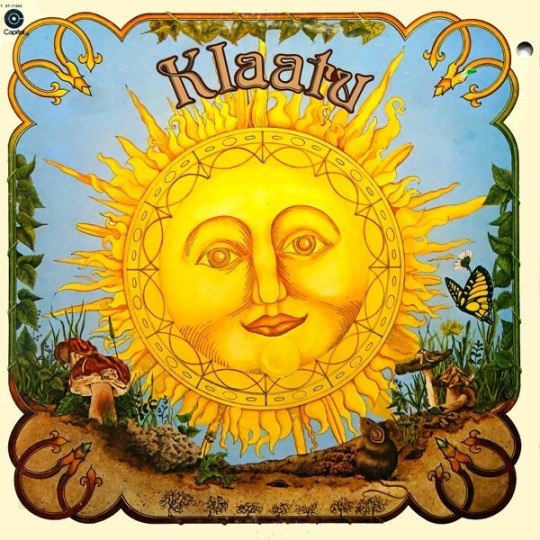
More recently, record companies have had to get extra creative with their promotional efforts. With no live events, social media tie-ins are more prevalent than ever. Live streaming performances have been big. Ben Folds put on weekly virtual concerts, taking fan requests and telling stories behind songs. Post Malone did a whole Nirvana tribute livestream on YouTube. Travis Scott even performed inside the video game Fortnite. I guess. That’s what I heard anyway.
This stuff gets attention and media coverage, which often translates to dollars. And sometimes a good rumor sells even more than any expensive, well planned publicity stunt or multi-platform marketing strategy. Keith Moon driving his Rolls Royce into a hotel pool, which is actually kinda true, but a mash up of two other real things that happened. According to Pete Townsend, “he left the handbrake off, and the car rolled into a pool, which was under construction and waterless. In the other, he charged a new car to the band, who refused to foot the bill, so Moon drove into a muddy pond in his garden and called the dealer to pick it up." Cool guy. Or Keith Richards smoking his father’s ashes. Or the stuff that people say Ozzy Osbourne did. Yeah, he actually did do most of those things. Anyway, you get the picture. These stories are part of rockstar myth making.
What about the perennial rockstar death rumors? Avril Lavigne was replaced by a lookalike years ago. Celine Dion was killed in a car accident. Paul is dead! Or even better, the conspiracy theories that so-and-so faked their own death. Elvis, Tupac and Kurt Cobain are actually still alive and their recording new music for other artists to this day!
And then there are the rumors that an album is actually a secret recording by someone else. A lot of times these are pretty thinly veiled stunts of their own, like Green Day recording albums under different band names The Network or Foxboro Hot Tubs. Or the aforementioned Chris Gaines/Garth Brooks debacle. Sometimes the rumors are total BS and quickly dispelled. We heard a DJ do this to create buzz for Emitt Rhodes earlier in this episode. The Emitt rumors didn’t get very far because Emitt was on that same radio show not long after, dispelling the rumors.
And then there’s the strange case of Klaatu.

In August of 1976, a mysterious album hit record shelves. The front cover included an earnest looking face on a sun symbol. There were no photos of band members. No credits of any kind. Just the name: Klaatu.
In Canada the album also included the cryptic subtitle 3:47 EST.
It didn’t get widespread attention. It was reviewed here and there and reviewed well, praised for its sci-fi concept and rich orchestral arrangements, but it didn’t sell much.
And then an article by Steve Smith ran in the Rhode Island daily newspaper the Providence Journal with the headline, “Could Klaatu Be the Beatles?” Before we get into all of the signs that pointed Smith to ask this question, let’s tackle the biggest one: Klaatu’s sound. Listen to the track Sub-Rosa Subway and judge for yourself. Could Klaatu be the Beatles?
youtube
That was Klaatu with Sub-Rosa Subway from their debut record from 1976, an album rumored to be a collection of secretly reunited Beatles’ recordings. Steve Smith’s Providence Journal article changed everything for the band.
Here’s a snippet from Smith’s article:
“Who are Klaatu? That is the mystery. Their names are being kept secret by Capitol Records and Frank Davies, who handles the group’s so-far clandestine affairs. The group will not submit to any publicity pictures (a Capitol press release says that ‘they want to be known for their music and not for whom they are’). They are rumored to be independently wealthy. Capitol claims to have no knowledge of the identities of the band members, but this raises a question: Why would Capitol invest in an ‘unknown.’?
It continues:

“Klaatu’s album brings back memories of the Beatles on every song, especially Sub-Rosa Subway, a song about the building of the New York system, and Doctor Marvello about a man with mystical powers. Sub Rosa Subway sounds like 1968-1969 Beatles. The vocals are exactly like Paul McCartney’s, the drumming like Ringo Starr’s and the guitar work like George Harrison’s and John Lennon’s.”
And it wasn’t just the similar Beatles sound and lack of information about the band that gave the rumor steam. There were supposedly clues hidden in the album artwork and the music itself. Let’s start with the name of the band: Klaatu. Klaatu is a reference to the 1951 science fiction movie The Day the Earth Stood Still. Klaatu is the name of Michael Rennie’s character in the film, a peaceful ambassador from an extraterrestrial confederation who visits Washington D.C. in a flying saucer with his humanoid robot Gort. Well, on the cover of Ringo Starr’s 1974 solo album Goodnight Vienna, Ringo is shown emerging from the same flying saucer alongside Gort from The Day the Earth Stood Still.

There were more clues.
Klaatu’s album was released by Capitol, the American record company that had released The Beatles records.
The albums publisher name includes CAPAC, which is the Canadian equivalent to ASCAP. The American (or Canadian) not-for-profit performance-rights organizations that protect Authors, Publishers and Composers copyrights. Anyway, the Canadian CAPAC designation was supposedly significant because John Lennon was rumored to be moving to Toronto around this time because the U.S. was trying to deport him.

The song Sub-Rosa Subway was maybe a play on the name of Paul’s solo album named Red Rose Speedway.
On The Beatles’ Abbey Road album, there is a song called Sun King, which the giant sun on Klaatu’s album cover must be a reference to. Too far fetched? Well, then how do you explain that by switching the initials of Abbey Road (AR), they become RA, the name of the ancient Egyptian Sun God. Sun King! Ok, yeah. That’s out there. And there are dozens more even more imaginative “clues” that point to Klaatu being the Beatles, including the supposed hint at the beginning of this spacey, Klaatu hit.
Are those Beetles buzzing at the beginning of the tune Calling Occupants of Interplanetary Craft? Sounds like crickets to me. Wait! The Beatles name was inspired by Buddy Holly and the Crickets. More clues!
youtube
That was Calling Occupants of Interplanetary Craft by the mysterious Klaatu. That song was an even bigger hit for The Carpenters. Richard Carpenter was a big fan of the band. The “Klaatu are the Beatles” rumor blew up. The story was picked up by other journalists and soon the story was gaining steam around the world. And so were Klaatu’s record sales. Because of all the buzz Klaatu’s debut album sold out everywhere and the record company couldn’t keep up with the increasing demand.
So who were Klaatu? According to the band’s record label, Capitol, who knows? Capitol said they signed the band through Frank Davies, who’d released Klaatu’s material on Daffodil Records in Canada. Davies said he had previously recorded and produced other Daffodil artists at Terry Brown’s Toronto studio. Terry Brown was the producer for the band Rush, by the way. Davies said that Terry Brown played him two or three Klaatu tracks and he loved them immediately. He told Terry he wanted to sign Klaatu sight unseen.
Here’s Frank Davies explaining more in an article for Louder Sound:
“My label was centered in Canada, and what I would do with my artists back then was go out and put together a US deal, or deals around the world. I played the tracks to Rupert Perry who was head of A&R at Capitol Records in the US. He loved them and said he’d like to sign the band.”
Wait, so not only had Capitol not seen or met the band, but neither did the guy who signed them to their Canadian label and delivered them to Capitol? What’s more, Davies told Capitol that he’d been told the band wouldn’t be taking any photos, doing interviews, providing a bio or even playing live. The mystery band wanted the focus to be about the music, which they felt speaks for itself. In fact, they were already almost done with their second album by the time the Beatles rumor exploded.
From Klaatu’s second album Hope in 1977, here’s We’re Off You Know.
youtube
That was We’re Off You Know from Klaatu’s sophomore release Hope, released in 1977.
At this point, the Klaatu/Beatles mystery was so big, it went beyond finding clues in the album art and music. People started doing some serious investigation. Frank Davies and Capitol records couldn’t keep up with all of the requests for interviews.
Rather than confirm or deny the rumors, they decided to play coy. Hey, records were selling and everyone like the music, so what did it matter if anyone knew for sure?
Eventually someone produced some actual hard evidence. It was bound to happen eventually. Dwight Douglas, the WWDC Program Director in Washington DC made a trip to the Library of Congress. He looked up the actual copyright records for the Klaatu’s song publishing.
And in the end, Paul McCartney, John Lennon, George Harrison and Richard “Ringo Starr” Starky were no Klaatu.
No, Klaatu were John Woloschuk, Dee Long and Terry Draper. Klaatu is Klaatu, which is also the headline that ran once the rumor bubble finally burst. And the backlash was significant. The truth was, the band was only vaguely aware of the Beatles buzz while they were hold up making their second record and they thought it was funny. Paul McCartney sent Frank Davies a postcard at the peak of the hype, saying he was having a laugh over the whole thing. No, Klaatu did not craft a masterplan to release a mysterious album that would get mistaken for a secret Beatles reunion record. They really did want the music to be the focus. They were interested in maintaining their privacy, and frankly, they knew they complex orchestral arrangements were not likely to be easily recreated live in concert. Capitol and Davies rode the mania to milk album sales, and it worked. And Davies knew good and well that the band he signed were not the four Liverpool, but rather three progressive rock nerds from Canada.
The media and the public, however, perceived the whole thing to be an orchestrated scam. A grand hoax. Radio stations stopped playing Klaatu. Magazines stopped covering them. And people stopped buying their records. Which is a shame because they’re quite good. Klaatu needed a holiday.
youtube
That was Everybody Took a Holiday from Klaatu’s third album, Sir Army Suit.
The “Could Klaatu Be the Beatles” story is fascinating. The fact that any rumor like this, let alone one about the biggest band on the planet, could grow legs and take off seems especially strange nowadays when any and every bit of gossip is almost instantly confirmed or refuted in real-time. But beyond the outrageous tall tale, the band warrants further investigation and appreciation. Klaatu put out five highly accomplished albums. They were not merely Beatles clones. Each album is packed with genre-shifting, ultra melodic, highly complex songwriting and production that’s bursting with creativity and wit. No wonder people fell for it. Klaatu’s music backed up the story. In the end, the music really was the focus, as it should continue to be. Do yourself a favor and take a ride on the Starship Klaatu.
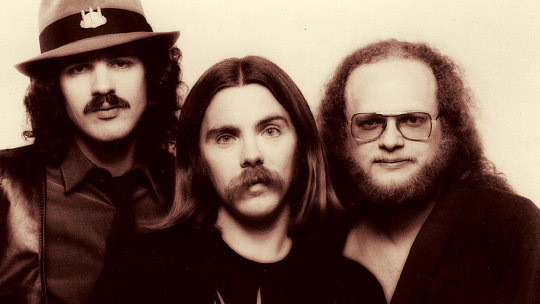
References and other goodies:
Very good Louder article telling the whole story from the beginning
Radio broadcast examining whether Klaatu is really the Beatles
Open Culture post with a summary, plus links to other videos and clips
Recent Ledger Note post that details the clues and has a link to the original Providence Journal story
Image of the original Steve Smith article (see above)
Sound Opinions episode that mentions Klaatu and summarizes the story
Interview with Terry Draper of Klaatu
Taylor Swift article about the donation she sent to Horace Mann school for the deaf
Walmart/ Pitbull video about the concert in Kodiak, Alaska
Justin Bieber article about the viral campaign to send him to North Korea
#musicpodcast#rock n roll#musichistory#klaatu#the beatles#yes#frank zappa#music#music discovery#the carpenters#capital records#70s#providence journal#rumors#pitbull#taylor swift#katy perry#green day#the kinks#the moody blues#supertramp#ELO#vinyl#vinyl collector#record collection#vinyl love#lost classic#paul is dead
4 notes
·
View notes
Text
Emitt Rhodes: He Made the Best Paul McCartney Records Not Made By Paul McCartney
This post is a near- transcript of the Broken Buttons: Buried Treasure Music podcast (episode 4, side A). Here you’ll find the narration from the segment featuring the great Emitt Rhodes, along with links, videos, photos and references for the episode.
Listen to the full episode on Spotify, Apple, Anchor or Mixcloud.
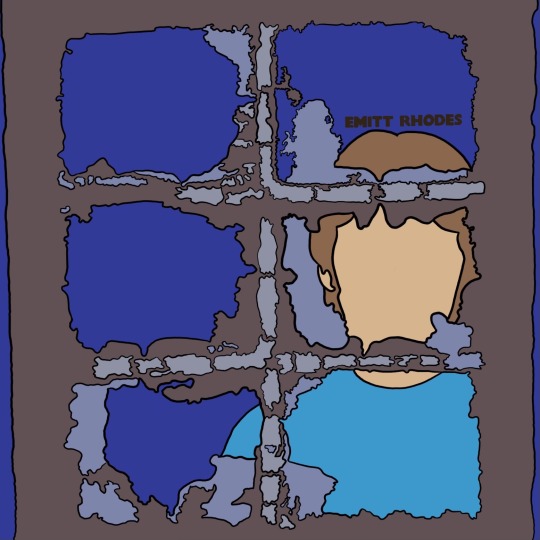
Do you ever hear music that is so surprisingly good that you immediately get excited to share it with someone else? This is especially fun when you know the music you’re about to share is perfectly in the wheelhouse of the person you’re sharing it with.
This happened to me the first time I heard Emitt Rhodes. Emitt might be the best known of the artists I’ve covered so far, but even though he’s received a lot of attention over the past few years, he’s still alarmingly under the radar to a lot of people who would surely love his stuff. You see, Emitt Rhodes’ first album sounds exactly like the music Paul McCartney fans desperately hoped he would make after the Beatles disbanded.
The entry for Emitt Rhodes’ first solo release in the Mojo Collection Album Guide has the heading: The best LP Paul McCartney never made.

This is why I was so excited to share Emitt Rhodes’ music with my parents. I grew up in house where the Beatles and Beatles solo music was played all the time, especially McCartney and Wings. Beatles and McCartney music have been a staple for holidays and vacations and family get-togethers for years. My parents’ song is My Love from Red Rose Speedway. We’ve been to see him together multiple times. It’s part of our shared musical DNA. As expected, my parents thought Emitt’s music was great. And now I’m excited for you to experience it.
If you’re already a fan of the Beatles and their solo work, it’s hard not to become a fan. Emitt Rhodes’ entire first album is perfectly McCartney-esque from start to finish. Songs like this. And this. And this.
Right?
Before basically everything ever recorded was a click away on streaming or somewhere on the internet, discovering an artist like Emitt Rhodes was even more rewarding. Me and my friends would read fanzines and music magazines and buy music based solely on the reviews, usually because it compared one band to a band we already liked. Or we would scour the liner notes of our favorite albums and buy something from a band we didn’t know, just because they were mentioned in the thank you section. It was infuriating when this backfired, especially since we had a very limited amount of disposable income and you couldn’t just return something you didn’t like. One time I threw a CD out the window of a speeding car because I was so disappointed. That was pretty stupid.

The closest you could usually get to trying something before you bought it was going to a record store with a listening station, but even then, they would usually just have a handful of mainstream artists the major labels were pushing that month. For a brief window in the 90s, Blockbuster, yes the old video rental chain, bought a bunch of record stores and renamed them Blockbuster Music. Their gimmick was that you could listen to ANY CD IN THE STORE before you bought it. In reality, the staff acted supremely annoyed every time you asked them to open up a new CD and load it into the player. That didn’t stop us from spending entire weekend nights sampling stacks of music we were interested in.
I was thinking about the evolution of music discovery and how easy it was for me to stumble upon Emitt Rhodes in the past decade, but how difficult that would have been to find someone like him by reading the limited number of music magazines I could afford, or pressuring the Blockbuster Music clerk to open yet another CD by some dude that was listed on a flyer with another band that I liked from a mix tape. I mean, even if someone had told me about Emitt at the time, his music was long out of print and Discogs did not exist. How exhausting.
Luckily, the future arrived, and along with it scary-accurate music discovery algorithms and brilliant curators with every great recording at their fingertips.
Let’s hear a full song from that Emitt Rhodes debut. From his self-titled album, released in 1970, this is Fresh as a Daisy.
youtube
That was Fresh as a Daisy from Emitt Rhodes album, Emitt Rhodes from 1970. That was the hit from an album that, honestly, is packed with wall-to-wall hit-worthy tunes. The album even climbed to #29 at the start of 1971. But let’s go back a bit.
Warning: Emitt’s story starts exciting and full of hope and then gets, honestly, pretty dark and upsetting.
Emitt Lynn Rhodes was born in 1950 in Decatur, Illonois. He grew up in Los Angeles. He had music buzzing around him early on. He lived in the same neighborhood as the Beach Boys and he went to school with Debbie Harry. Emitt started his musical journey as a drummer, on an emerald green drum kit as a member of the Emerals. That’s Emerals without the “d” for some reason. Emitt was 14 at the time. The boys renamed themselves The Palace Guard after about a year and donned matching red British guardsman’s uniforms. They had a sorta hit in their single “Falling Sugar” in early 1966, which ended up on one of my favorite collections of all time, Nuggets: Original Artifacts From the First Psychedelic Period.

The Palace Guard had some mild success. They even got to play the backing band for Don Grady, also known as Robbie on the sitcom “My Three Sons.”
Emitt didn’t stay behind the drums for long. In fact, during their regular gig at The Hullabaloo in Hollywood, he regularly grabbed the spotlight for his rendition of Michelle by The Beatles. Looking for more than The Palace Guard had to offer, and inspired by Beatles fandom, Emitt decided to form his own four-piece with him out in front on guitar and vocals. He called his new group The Merry-Go-Round. He also learned to write songs and he was really good at it.
youtube
That’s Live by The Merry-Go-Round with Emitt Rhodes on lead vocals and guitar. That song also found it’s way onto the Nuggets box set. Here’s what the liner notes have to say about The Merry-Go-Round.
"Emitt Rhodes and Gary Kato were still high school students in the L.A. beach community of Hawthorne, California, when their first single 'Live,' became a big hit in Los Angeles in early 1967. A classy piece of Southern California-grown pop...The song's uplifting lyrics, rich, Beatles-esque harmonies, and distinctive, swaying beat show a maturity and sophistication few teenage garage bands could claim to possess."
"After the success of 'Live,' A&M quickly rushed out an album, which revealed Rhodes to be a gifted songwriter, heavily influenced by Lennon & McCartney. The group went two-for-two when their second single, 'You're A Very Lovely Woman,' also hit the top spot in L.A. But subsequent singles, though showing Rhodes' rapid maturation, didn't sell as well. Relationships in the band quickly became frayed, and after several lineup changes, The Merry-Go-Round split up in early '69."
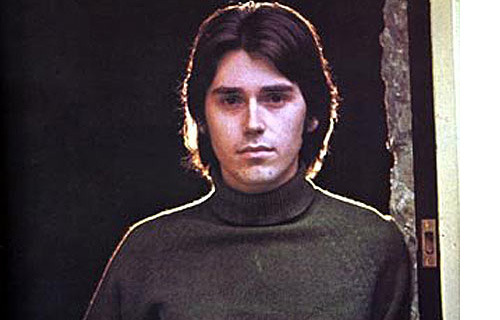
The single started to make money, so as not to waste the opportunity, the record company mixed down a bunch of the group’s demoes and put them out as an album.
Emitt decided to strike out on his own as a solo artist. And to avoid the conflicts that come along with dealing with other band members or producers and engineers, he decided to become a one-man band and build his own recording studio in his parent’s shed. Not even the garage. It was his father’s shed, built BEHIND the garage. This was way before home recording was ubiquitous—even with major stars. Paul McCartney himself hadn’t even released his home recorded solo album, McCartney just yet. Emitt bought an Ampex four-track. He said it looked like, and was the size of, a washing machine with big black knobs for controls.
And then he set about methodically recording an album. He played every instrument. He wrote every song. Because he only had four tracks to work with, after recording drums, piano and bass, he’d have to mix those three tracks down to the one remaining track, so that he could free up another three slots for lead guitar, vocals, tambourine, or whatever else he had in mind. It wasn’t a quick process. Eventually he rented an eight track machine to speed it up a bit. Once he had a few songs recorded, he approached the label ABC/Dunhill with his one-man band concept. They bought it. Emitt took the $5,000 he got and sunk it back into home recording studio upgrades.
Let’s hear another song from Emitt Rhodes’ home recorded masterpiece. This is Somebody Made for Me.
youtube
That was Somebody Made for Me by Emitt Rhodes from 1970.
DJ’s played up the Beatle-y buzz, some even stoking rumors that the album might actually be the Beatles or McCartney.
Like this guy.
The album received great reviews. And because it was selling so well, Emitt’s prior label A&M got up to their old tricks again. Sensing another opportunity, they cobbled together some leftover Merry-Go-Round tracks from an unfinished album with another batch of demoes and released it as an Emitt Rhodes solo release. This confused record buyers. Thinking they were buying the Emitt Rhodes debut they heard promoted on the radio, many ended up buying the A&M competing, but inferior release called The American Dream. Let’s be clear though, The American Dream is still a really good collection of Beatles-esque pop tunes, however, it’s not on the same level as Emitt’s proper solo album. The extra release muddied the marketing and cut into sales of his first actual record. This was an early first blow to Emitt’s solo career.
The bigger tragedy turned out to be Emitt’s contract, which called for him to deliver a new album every six months. This is just wild to imagine today, when artists might go 5 or more years between releases, but at the time, a lot of artists were expected to crank out multiple albums per year. Emitt knew that the contract was, in his words, “a lousy deal.” After all, it took him a full nine months to finish the first record. The math didn’t work. His manager told him to sign the contract and they’d figure it out later. Emitt wasn’t a legal expert. He wasn’t an anything expert. He was barely 20.

Emitt tried to be optimistic and figured he might be able to speed up the process now that he had better equipment and the experience of making one full album under his belt. The thing is, songs this good, being crafted and recorded by one person playing everything, take as long as they take. And that’s longer than six months. Emitt liked performing, but he grew to resent it because it cut into his precious studio time. He didn’t do much of anything outside of the studio.
It took nearly a year for Emitt to deliver his second album, Mirror. He was only halfway into making it, and he was already in breach of his contract. Although not as powerfully consistent as his first album, it’s another excellent batch of melodic pop songs.
From the All Music Guide review of Mirror by Matthew Greenwald:
"Following the critical success of his debut solo album, Emitt Rhodes, the one man Beatles, entered his home studio for the follow-up, and he did not disappoint. Although not as cohesive as his last record, Mirror is home to some of his finest material. 'Birthday Lady' and 'Really Wanted You' are almost Stones-like in their attack, aggression, and feel, and Rhodes pulls them off with fantastic results. 'Golden Child of God' is also one of his finest compositions — it also would have easily been at home on Paul McCartney's Ram. All in all, this album is not a disappointment, coming off his self-titled debut, Emitt Rhodes, which can easily be described as one of the classics of the period."
Let’s hear one of the more rocking cuts on the album. This is “Really Wanted You.”
youtube
That was “Really Wanted You” from Emitt Rhodes’ second official solo album, Mirror, released in 1971.
At this point Emitt was buried in stress. He was being sued for a ton of money and he was still on the hook to deliver yet another album. The record company seemed more interested in pursuing their contractual breach claim than promoting the latest album, which topped out at #182 on the charts.
His next album, Farewell to Paradise, was made under all if this pressure. Coming off an underperforming album, in the midst of a legal mess, no free time to speak of and no light at the end of the tunnel. Despite all this, Emitt turned out another really great record.
From the All Music Guide review:
"This, essentially Emitt Rhodes' third and final album, is once again a one-man-band affair. It does differ, however, from his earlier efforts. The record has a much more wistful, almost Harry Nilsson-like feeling, and this permeates most of the cuts...Although not as buoyant as his earlier efforts, Farewell To Paradise is still a very strong album, and further cements his reputation as one of the great (albeit long-lost) artists of the period."
HIs record label wasn’t supportive. The album went unnoticed and Emitt was beat down and exhausted.
Emitt said, “After that album, I stopped recording. I stopped writing because I was burnt out. It was a lot of work, and a lot of trouble, to boot. The harder I tried, the more trouble I was in. It wasn't rewarding anymore...I had taken a much longer period of time to do the third album, and they were suing me for more money than I had ever seen, and I just thought, why do I want to do this?"
He was only 24. And he was done.

Emitt walked away. Burned out by the business, he went into isolation. He eventually worked on staff for Elektra/Asylum, working on other people’s releases. He played a show here and there and there were several almost new albums over the decades, but things didn’t work out for one reason or another. He also struggled in his personal relationships over the years. He went through a painful divorce and his kids stopped talking to him. By all indications, the trauma he experienced as a young musician went deeper than record company pressures and lawsuits. In a rambling, near incoherent interview with WFMU’s Michael Shelley in 2010, it’s clear how dark it had gotten for Emitt. He makes comments about sexual abuse and pedophilia that took place when he and his Palace Guard bandmates were just starting out. I would not recommend seeking out this interview. It’s very difficult to listen to and Emitt is a complete jerk and absolute mess all. He makes multiple homophobic remarks throughout and can’t answer a single question with some dumb, snarky remark tagged on.
I told you it got dark.
Over the years, there was news here and there that Emitt had continued to write and record and had started to pull himself together. He seemed to always be on the verge of releasing a new album. He continued to tinker in his home studio, only now it was in his own garage, across the street from his parents’ former house and still so close to that shed he recorded those legendary lost albums in all those years ago. Emitt seemed to get his act together more recently. Enough so, that he finally did release his first album in more than 40 years in 2016. This time he let go of the one man band concept and accepted the help of a talented crew of admiring musicians and producers, including Jon Brion, Jason Falkner and Roger Joseph Manning Jr. from Jellyfish, Nels Cline from Wilco, Aimee Mann, and Susanna Hoffs.
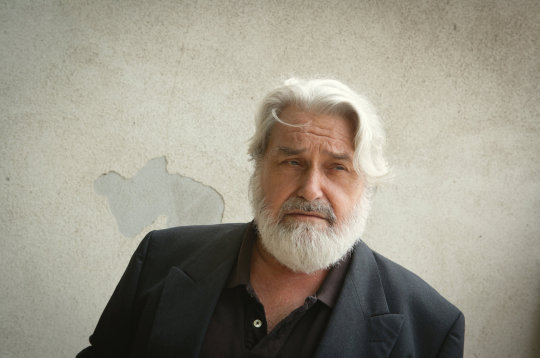
And the record? It doesn’t sound like the Beatles and Emitt no longer has that peak McCartney tone (hey, neither does McCartney these days), but it’s excellent in its own way. Rainbow Ends is a fittingly more mature, introspective record with the rugged-tuneful charm of a latter-day Elvis Costello record.
Songs like “If I Knew Then,” “This Wall Between Us,” and “What’s a Man to Do” are darker and brimming with regret, but the melodies and wit are still there in force.
The album received universally glowing reviews. The All Music Guide review for this one says:
“Listeners who were hoping Rainbow Ends would sound or feel like Emitt Rhodes (first album) or Mirror were probably fooling themselves, and that's certainly not what the songwriter and his colleagues were aiming for; instead, this is a mature, introspective work from a man looking for answers to the questions of life and love, and it's a brave and genuinely impressive return to the spotlight from a major talent.”
This is my favorite from the album, “Dog On a Chain.”
youtube
That was “Dog on a Chain,” the leadoff track from Emitt Rhodes 2016 comeback album, Rainbow Ends.
And that was the official end of Emitt Rhodes recording career. He passed away a few years later. On July 19th, 2020 Emitt died in his sleep at his home in Hawthorne, California. An endlessly talented singer-songwriter who wrote some of the greatest pop songs that more people should’ve heard… but now you can. Emitt Rhodes.
References and other stuff to check out:
An excellent Emitt Rhodes website with so much detail about his life and music. Sadly, this hasn’t been updated for some time before Emitt passed away. The full DJ clips I used in the episode are housed on this site.
NY Times obituary for Emitt. I’m not going to link all of the obituaries on the blog, but if you google Emitt, there are pages of results with all the obits with mostly the same information.
The AllMusic reviews that I reference in the episode can be found here. I use All Music Guide as a reference in almost every segment of the show. The Matthew Greenwald reviews are especially good, so I’m calling them out separately this time.
Omnivore Recordings page on Emitt
A Steve Hoffman forum thread about Emitt’s music, including a lot of discussion about The Merry-Go-Round
A reddit thread similar to the one above
Q&A with Emitt Rhodes conducted my Michael Des Barres
Nice write up by Every Record Tells a Story on Emitt
Record Collector review of the documentary The One Man Beatles about Emitt that was released in 2010. I saw this movie years ago and I remember it being quite good. I could not find it on streaming while I was working on the Emitt episode, so I did not reference it throughout. If it becomes available again I will post and Tweet about it right away. This also includes a short interview with Emitt.
#musicpodcast#musichistory#rock#singersongwriter#paul mccartney#wings#the beatles#harry nilsson#todd rundgren#emitt rhodes#a&m records#rainbow ends#mirror#rock n roll#buried treasure#lost classic#vinyl#vinyl collector#records#record collection#farewell to paradise#american dream#the zombies#ELO#the byrds
1 note
·
View note
Text
Broken Buttons’ Favorites: The Fabulous Poodles (The Playlist)
0 notes
Text
Broken Buttons’ Favorites: P.P. Arnold (The Playlist)
0 notes
Text
The Fabulous Poodles: New Wave + Pub Rock + Fun Kinks-y Tunes
This post is a near- transcript of the Broken Buttons: Buried Treasure Music podcast (episode 3, side B). Here you’ll find the narration from the segment featuring the seventies U.K. rock band The Fabulous Poodles along with links, videos, photos and references for the episode.
Listen to the full episode on Spotify, Anchor or Mixcloud.

Every once in a while I’ll go to a record store and buy something completely random. I guess it’s not totally random. I don’t spin around and buy the first thing I point to. It’s usually because something about the cover strikes me, or I like the name of the band or album. Or something about it reminds me of something else. For example, when I was in a band years ago, one of our friends tried to persuade us to change our name to The Sweater Boys because we all wore ugly Cosby sweaters at our first gig. We never became The Sweater Boys and I don’t think our friend ever forgave us, but I’ve always liked the name. Not long ago, I was at my favorite record store and I saw an album by a group called The Sweater Girls. Based solely on that name, I bought it. It turned out to be good! This doesn’t always work out, but more often than you’d think. it actually does. It’s fun. Try it.
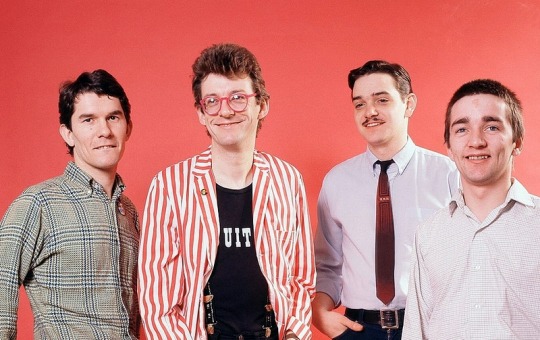
The most successful version of this happened, not when I semi-arbitrarily scooped something up, but when my wife’s uncle Ron did. He was at a garage sale and saw an album with an eye-grabbing electric pink cover adorned with a collage of gaudy instamatic photos from the 70s. In each unflattering shot, the subject is wearing oversized pink glasses while mugging for the camera. One guy has really really bad teeth. One is a lady that kinda looks like Lou Reed dressed as Marilyn Monroe. One is an overweight old man without his shirt on. One is Howdy Doody. It’s fantastic. Uncle Ron didn’t know the band, but he bought it anyway. He brought it with him the next time he visited and asked if I wanted it because he knows I collect records. We laughed at the cover and the name of the band and I thanked him for thinking of me. He asked If I’d ever heard of this group. I hadn’t. The record sat in a pile with a bunch of my other records for quite a while and then one day something inspired me to throw it on. Guys, it was so good! The record was Think Pink by The Fabulous Poodles.
youtube
That was Bionic Man by The Fabulous Poodles from their final album, 1979’s Think Pink, the first album I ever heard by the band, but not the last. All thanks to Uncle Ron’s garage sale record buying hunch. Sometimes you can judge a record by its cover.
So who was this band with the silly name and the funny album cover? Well, in their words, they were not always thoroughbreds. Pedigrees take time. The Fabulous Poodles started off as just The Poodles when they recorded their first single in 1975. It did not sell, despite an enthusiastic endorsement from a major character in episode 2 of Broken Buttons, the one and only legendary English disc jockey John Peel. That guy’s all over this show. Peel, a self-proclaimed Poodle-file, even touted The Fabulous Poodles as his favorite band for a while. Still, they did not pack in the crowds or get much attention at all. The group took to developing an outrageous stage show to reel in the crowd.
From the liner notes of the band’s 2018 box set, Mirror Stars:
“We shamelessly courted notoriety and outrage by performing eccentric (not to say offensive) acts occasioning, at various times, the use of an outsized razor blade, an inflatable woman, a bottle of ketchup, electric exploding ukuleles, ringing celebrity telephones while at the same time auctioning poodle-printed wallpaper to the bewildered crowd. Hey Rock n’ Roll!”
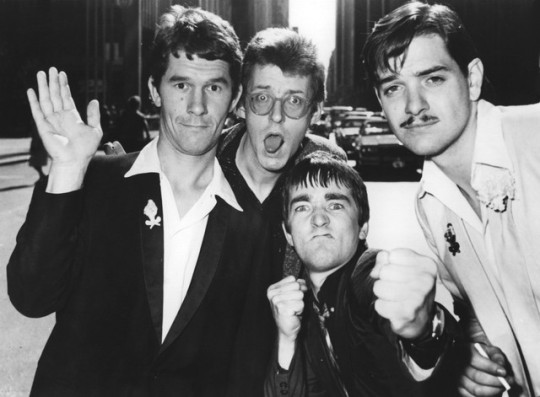
The live act made them a hit on the road. They toured all over the UK, and then fanned out to Holland, Germany and Belgium. Through grinding effort, plus the persistent support of John Peel, the Poodles built up enough of a following to snag a contract with PYE Records. They even scored John Entwistle of The Who as producer. The Fabulous Poodles self-titled debut record was released in 1977. Their crack humor is present throughout. In fact, the album begins with the end. The first track on side A is called The Ending and it’s just 15 seconds of the ending of the band playing their last song before saying “I guess we have time to do one more” and then launching into the rest of the album. This isn’t a collection of novelty songs though. It’s a wonderful showcase of melodic Kinks-y gold that fits in perfectly with the other new wave crossed with pub rock that was rising at the time with acts like Graham Parker, Nick Lowe and Elvis Costello. In fact, with his piercing horn rim glasses, singer Tony DeMeur was inevitably compared to Costello. Unfortunately, the Fab Poos did not get the buzz that Elvis, Nick or Graham were getting.
Let’s hear something from that eponymous debut. Here’s Mr. Mike. John Entwistle plays 8 string bass on this track.
youtube
That was Mr. Mike from The Fabulous Poodles first full length in 1977.
The band appeared on the BBC show The Old Grey Whistle Test. Talking Heads also appeared on that episode. On the show, which was broadcast completely live, drummer Bryn Burrows darted across the studio and kissed host Bob Harris. John Parsons, a non-performing member of the band who wrote many of their lyrics, was wearing a full poodle costume. Parsons as poodle presented Harris with fake doggy doo doo. Harris was pretty pissed.
Their second album, Unsuitable, did not fare any better, but made just enough noise to get them signed to Epic Records in the states. The U.S. responded a bit more favorably to the Poodles and they expanded their following with opening gigs for The Ramones, She Na Na and Tom Petty. They even served as Chuck Berry’s backing band. This was the period where Berry would tour alone to save money and then hook up with any band and plow through his hits, despite the fact that most of the bands that joined him hadn’t learned the songs or couldn’t keep up.
Unsuitable sold fairly well in America and the Poodles even appeared on American Bandstand and other shows.
youtube
The group started to get recognition as part of the new British Invasion with acts like Joe Jackson and Dire Straits.
From a review in Louder Than War:
“The Poodles really came into their own on the second album, 1978’s Unsuitable, where they really found their own identity. This LP includes the song that came close to breaking them into American charts, Mirror Star. Though the story-line of a Rock & Roll dreamer finally coming good wasn’t original, they built the song up with great panache and craft.”
Here’s the Fabulous Poodles highest charting—only charting—single, Mirror Star.
youtube
That was Mirror Star by The Fabulous Poodles, their big hit from their second album, Unsuitable in 1978. Jim Parsons commented on a YouTube performance of this song. He said he wrote the lyrics about the brother of a friend of his, who was still at school, played a lot of air guitar, never made stardom, and eventually became headmaster,—“a proper star!”
You can see Bobby Valentino shred on the violin in that performance (another thing that makes their sound unique and difficult to categorize). He sometimes played it through a talk box. Bobby says that the U.K. labeled them as a comedy-band and did not give the music respect. There are certainly funny songs, and a few that the band’s singer Tony De Meur even admits he cringes at, but many are quite serious. America seemed to get it that the music was seriously good, even if the band members didn’t take themselves very seriously.
The Poodles second album, Unsuitable, was actually never out in the states. No, in America Mirror Star was part of a US release called “Mirror Star” that combined songs from the Fabulous Poodles first two albums. Up until more recently, the band’s last album, Think Pink, was the only proper album available here.
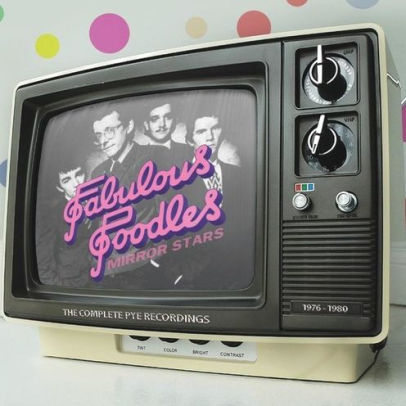
Much like how baffled Dick Clark sounded about the Fabulous Poodles in that American Bandstand clip we heard earlier, the band’s record company was equally perplexed. This confoundment carried over into attempts to market the band. What were they? New wave? Pub rock? The UK’s version of Devo? A rockabilly revival band? A Kinks throwback?
Somebody at the label thought it was a bright idea to print up thousands of oversized sleeves of their third record, Think Pink, as a silly marketing gimmick. The covers were four times the normal size and wouldn’t fit in any record store racks. Brilliant.
The album kicks off with a clever cover of an Everly Brother’s b-side, Man With the Money. Here’s a story from Tony’s liner notes about the time he met Don Everly.
“While we were recording this track along with half a dozen others, Brian Justice, the PYE A&R man who got us signed, came into the studio with a stocky, middle-aged American guy with a Southern accent. “Tony, I want you to meet Don” said Brian and I suddenly realized that this man was Don Everly, one half of the greatest harmony duo in rock history. I was ready to genuflect before him when he held out his hand and told me he loved our version of ‘Man With Money’ the song he and brother Phil had written and recorded back in the mid-60s but was only relegated to a b-side. He told me he couldn’t remember writing or recording the song at all.”

The Instamatic photos on the cover of Think Pink were collected by a woman named Mary Ann that the Poodles met in Atlanta. She had tons of these photos, all with strangers wearing the same pink glasses. That’s Mary Ann on the song, Think Pink.
All these stories and more are packed into the Fabulous Poodles three CD set, Mirror Stars, the Complete PYE Recordings. The set also includes bonus non-album tracks, demos and live recordings. If you’ve liked what you’ve heard so far, it’s definitely worth picking up.
Let’s hear one more by The Fabulous Poodles before we wrap up. This is one of my favorites. From the second UK album, Unsuitable, and the first US release, Mirror Stars, this is B-Movies by the Fabulous Poodles.
youtube
B-Movies by the Fabulous Poodles in 1978.
The Poos called it quits after their third album in 1979. Tony de Meur says he was having a nervous breakdown by the end brought on by drinking and doing too many drugs. He wishes they would’ve taken a break and then regrouped. Tony went on to have a successful UK comedy career under the name Ronnie Golden. Talkbox violinist and multi-instrumentalist Bobby Valentino worked as a session musician and with his own band over the years. Bryn Burrows and Richie Robertson continued to play with other bands as well. I’m not sure what non-performing member in the poodle suit has been up to, but he does comment on the band’s YouTube videos. Tony, Bobby and Bryn reunited to play some gigs after the release of CD set reissues were released a few years back.
I still occasionally take a chance on an album that I’ve never heard by a band I don’t know, but it never lives up to that Fabulous Poodles moment of glory. I’m forever chasing the Fabulous Poodles.
References and the other stuff:
Interview with Tony and Bobby. I played clips from this during the episode.
An interview with Tony from Something Else
Trouser Press entry on The Fabulous Poodles
John Peel wiki entry on The Fabulous Poodles
Louder Than War article about The Fabulous Poodles and a review of the box set
Offbeat article about The Complete Pye Recordings box set
Billboard stats on The Fabulous Poodles
Live performance of Mirror Star that I reference in the episode
Legion of Weirdos segment on The FabPoos
#The Fabulous Poodles#Broken Buttons#music podcast#pub rock#new wave#rock#British invasion#Elvis Costello#Nike Lowe#Graham Parker#Squeeze#The Kinks#music history#underrated#underappreciated#buried treasure#music suggestions#vinyl#vinyl collection#record collection#American Bandstand#U.K. rock#seventies#Pye
0 notes
Text
P.P. Arnold: A Rock ‘n Soul Legend with a Masterpiece Lost Album
This post is a near- transcript of the Broken Buttons: Buried Treasure Music podcast (episode 3, side A). Here you’ll find the narration from the segment featuring the under appreciated soul singer, P.P. Arnold along with links, videos, photos and references for the episode.
Listen to the full episode on Spotify, Anchor or Mixcloud.
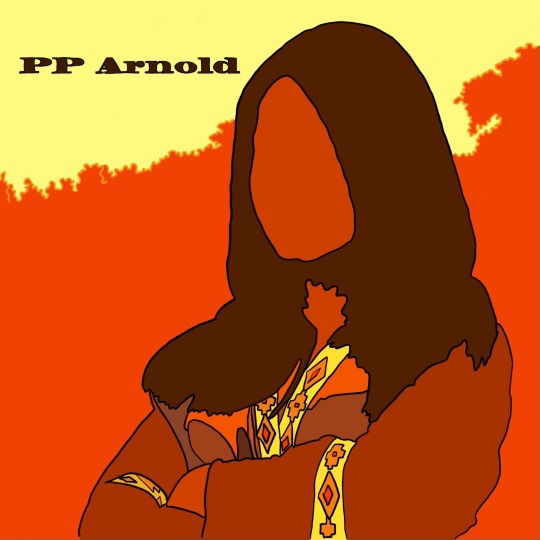
The mythic lost album. The Beach Boy’s Smile, Jimi Hendrix’s Black Gold, The Who’s Lifehouse. The ones we know about, that rise to legendary status and become the subject of fairy-tale fan-obsession, are usually fraught with torturous artistic back stories. Brian Wilson, traumatized by his own genius and tormented by excruciating recording sessions. Jimi laying down 16 autobiographical tracks with just his voice and his acoustic Martin right before his death. An abandoned sci-fi rock opera so complicated that only Pete Townshend could understand it that somehow involves AI synthesizer music converted from the audiences biorhythms. That’s for real. Decades pass and the folklore builds to a fever pitch.
Far more often, lost albums albums remain unheard. They get buried or shelved because a label folds or changes leadership or picks a new direction. Sometimes they get tangled in legal and political red tape. Sometimes faith is lost in an artist because a single or prior album has under performed. Maybe times and trends change and so do fans’ interests. Regardless of the reasons, a mountain of great music is probably buried each era that never sees the light of day.

Sometimes these legendary lost masterpieces are eventually unleashed, as with Brian Wilson’s new recording of Smile in 2004 or Neil Young’s recent unshelving of his long-lost 1975 album, Homegrown. Others, like Tom Petty’s original double-album version of Wildflowers, or Prince’s Camille, that he planned to release as a feminine alter-ego, get released here and there on subsequent releases or as outtakes or bonus tracks to sell box sets. Every once in a while, a true lost album is unearthed—one that does not have all the built-in hype baggage. And not only does it get a proper release to the public, but it’s also excellent.
Such is the case with P.P. Arnold’s The Turning Tide. Originally intended for release in 1971, PP’s would-be third album did not emerge until 46 years later. Arnold recorded an assortment of outstanding covers and also worked with an army of crack song writers over the years, including The Bee-Gee’s Barry Gibb, Eric Clapton, and Steve Marriott of Small Faces and Humble Pie fame. That said, I’m going to start things off with a song that PP Arnold herself co-wrote with songwriter and guitar player for Elton John, Caleb Quaye. From the once-lost and newly found album, The Turning Tide, this is Children of the Last War.
youtube
That was Children of the Last War from PP Arnold’s third full length album, hidden from us for more than four decades, The Turning Tide.
Before she was P.P. Arnold, she was Patricia Ann Cole or Pat. Born into a family of gospel singers in the Watts neighborhood of Los Angeles, Pat always loved to sing. She describes a moment in church when she was four years old, where the surrounding adult church goers were stunned silent by her powerful voice. And although she received great joy from it, she never intended to pursue a professional career as a singer. A teen mom working two jobs with two young children, P.P. was trapped in an abusive marriage. One day in 1965, an ex-girlfriend, Maxine Smith and another friend, Gloria Scott, called her up with an outrageous offer. They had secured an audition for the Ike and Tina Turner Revue. The only problem was, the third girl that was supposed to go with them had bailed at the last minute and Ike and Tina were auditioning groups of three. Pat (soon to be P.P.) said she couldn’t do it and told them not to come.

Here’s Arnold describing the incredible opportunity in an article by Pop Matters:
“She goes: ‘Pat, you gotta help us, the third girl’s dropped out.’ I said, straight away: ‘I can’t go, my husband won’t let me.’ They came anyway, and the next thing I know I’m at Ike and Tina’s house and we’re singing Dancing in the Streets. Tina says: ‘Right, you got the gig.’ I’m like: ‘Oh no, not me, I’ve got to go home, my husband doesn’t know I’m here, he’s gonna kick my butt.’ Tina said if I was going to get my butt kicked for nothing, I might as well ride up with them to Fresno and see the show that night. So I went, and it was amazing, and I didn’t get home until six the next morning. My husband was waiting for me at the door. Soon as I walk in, it’s: Bam!” – she mimes throwing a punch – “and it was like he knocked some sense into me, really. I thought: ‘This morning I didn’t have a way out, I was praying to God to show me a path out of this hell I’d created for myself, and now I’ve got a way out.’”
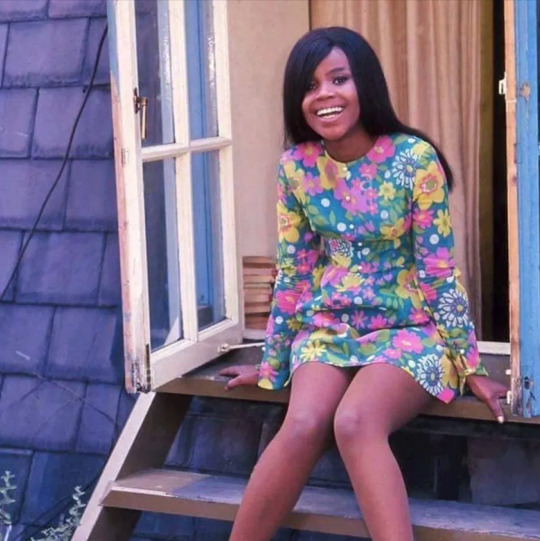
She took the way out. P.P. had no idea until later that Tina was struggling with her own abusive relationship, but would see plenty of it firsthand as the tour progressed. P.P.’s mother helped with her children while she adapted to the new revue gig. In no time she was traveling across the UK and opening for the Rolling Stones. It was Mick Jagger, on a walk in the park, who encouraged her to pursue a solo career and persuaded her to sign with the Stones’ manager, Andrew Loog Oldham’s new label, Immediate Records. She became the First Lady of Immediate and the title of her debut album declared the same. P.P. scored a UK hit from her debut release with the song The Time Has Come and this song...
Here’s PP Arnold with The First Cut is the Deepest from her first Immediate release, The First Lady of Immediate.
youtube
From 1968’s The First Lady of Immediate, that was P.P. Arnold with The First Cut is the Deepest. That song, of course, written by Cat Stevens, was recorded and released before Stevens’ own version of the song. PP’s version was a hit in the UK, peaking at number 18. P.P. collaborated with label mates, Steve Marriott and Ronnie Lane of the Small Faces on this album and on their recordings. She even dated Steve Marriott for a while. P.P. made TV appearances as a backup singer for the Small Faces and also recorded a duet with Rod Stewart during this time.
Her relationship with Marriott had to be kept hidden while it was happening. According to P.P., “Having an affair with a white guy, that was still really taboo in those days, not only on the white side, on the black side, too” The secret relationship inspired P.P. to write Though It Hurts Me Badly.
P.P. Arnold’s backing band featured Keith Emerson on keyboards, and a crew that would go on to become English prog-rock band The Nice.
Her second album for Immediate, the Andrew Loog Oldham produced Kafunta includes lush productions of originals mixed with recognizable covers, such as The Beatles’ Yesterday and Eleanor Rigby, and The Beach Boys’ God Only Knows. The 1968 release scored her more UK hits. The Marriott-Lane penned (If You Think You’re) Groovy hit the charts and so did this next one I’m going to play, which was a big hit for Merrilee Rush in the US. In the UK, however, P.P. Arnold’s recording is known as the definitive version. Here’s P.P. Arnold with Angel of the Morning.
youtube
Angel of the Morning by P.P. Arnold from her second album Kafunta, released in 1968.
Quote from Allmusic review of Kafunta:
“Though it cannot hold a candle to its predecessor, P.P. Arnold's second and final Immediate album is nevertheless a dramatic offering, its greatest flaws lying more in the conflict between singer and label than in either performance or production. Recorded with Immediate head Andrew Loog Oldham at the controls, Kafunta is riven by his dream of establishing Arnold in the same mass entertainment world as Cilla Black and Lulu, at the same time as Arnold fights to retain her own R&B sensibilities. Occasionally the conflict works well -- the MOR heartbreaker "Angel of the Morning" is performed with such a depth of yearning purpose that no other version on earth will ever sound so majestic.”
I agree with this take on Arnold’s second album. While I think her voice sounds great, and she handles the material well, I much prefer the R&B/Soul first production of P.P.’s debut and The Turning Tide. The lush orchestral productions veer a little too far into lounge music, and threaten to swallow PP’s groove.
This brings us up to the point where P.P.’s label, Immediate, started to crumble, and with it the chances of her releasing a third album. Her friendship with Barry Gibb helped move things forward. Gibb, temporarily on a break from the Bee Gees, wrote ten songs for P.P., three of which the Bee Gees would go on to record themselves. Barry ended up reuniting with his brothers before P.P.’s album was finished, leaving the project in limbo. Arnold’s new manager, Robert Stigwood, recruited Eric Clapton to help finish the record. This hooked PP up with Delaney & Bonny and Friends. A tour followed and soon much of that gang would end up morphing into the backing band for George Harrison’s All Things Must Pass album and eventually Derek and the Dominoes for the Layla album.
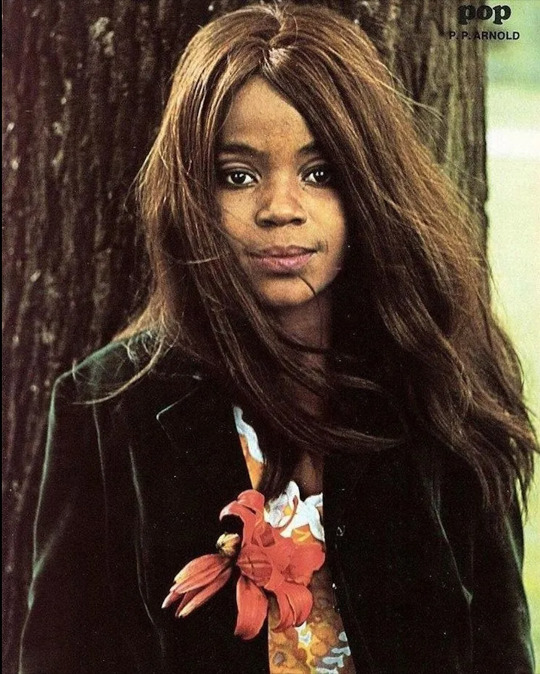
But back to P.P.’s album, or album in progress. The Clapton pairing produced more songs, but no finished album. Industry politics kept what would become The Turning Tide from wrapping up and earning a much deserved official release. P.P. eventually moved on. She kept busy and active working with Dr. John, Mick Jagger, Humble Pie, Graham Nash, Steven Stills and even contributing to the Jesus Christ Superstar soundtrack. Here she is on the track Poor Boy by English singer-songwriter Nick Drake from the album Bryter Layter from 1971.
Tragedy also struck in the 70s when P.P.’s daughter Debbie was killed in a car crash. P.P. withdrew from performing for some time after this. She returned to the UK charts several times in the 80s and 90s due to successful collaborations with Beatmasters and Ocean Colour Scene. She worked with Boy George, Andy Gibb and Peter Gabriel. That’s her on the choruses of Sledgehammer and Big Time.
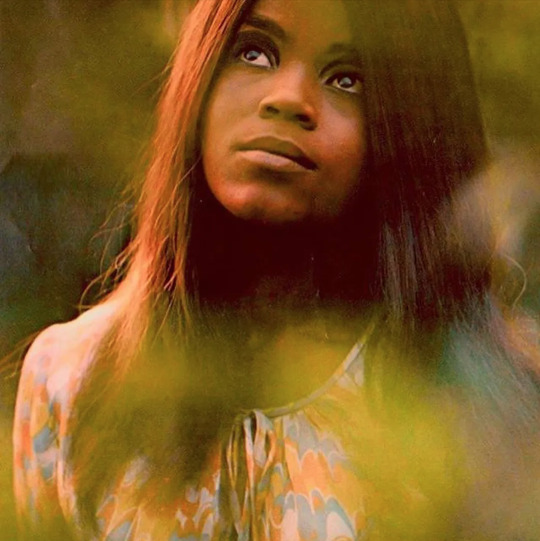
In the 2000s P.P. toured with Roger Waters for his In the Flesh and Dark Side of the Moon Live shows. After those tours finally wrapped, P.P. got back to performing solo. And it was a reunion with her old friend Barry Gibb that finally got the ball rolling on the long overdue release of her lost album, The Turning Tide. Gibb hooked Arnold up with an archivist at Universal to help track down all the original master tapes from 1968-1970, which turned out to be quite the task, as they were scattered in various vaults in Germany, London and LA. Finally, after almost 50 years, The Turning Tide was released in 2017 to rave reviews. A true lost classic.
P.P. had many hits in the UK over the years, but did not make a chart impression in her home country. She is much more well known in the UK and her early recordings continued to get recognition in the Northern Soul community for years after she stopped releasing solo recordings. P.P. is starting to get more attention in recent years since the release of The Turning Tide. She also recorded a brand new album. The New Adventures of… P.P. Arnold was released in 2019. Produced and recorded by Ocean Colour Scene and Paul Weller band guitarist Steve Cradock. It includes this version of a Mike Nesmith tune, which was also a Stone Poney’s hit.
youtube
That was Different Drum by P.P. Arnold from her latest album The New Adventures of… P.P. Arnold from 2019.
Almost 5 decades later and she’s still got it.
P.P. Arnold continues to record and plans to get back to performing regularly after the pandemic. There are still tracks from her 1968-70 sessions that have yet to be released, including some of those Gibb collaborations. She’s supposedly written her autobiography, which should be released sometime soon.
From a feature in The Guardian:
For someone who was thinking of retiring not that long ago, everything seems to be happening again: this old album, that new album, a forthcoming autobiography, a tour. It has always been like that, she laughs, right from the moment her girlfriend rang telling her to come to Ike and Tina’s house. “The unexpected always rules in my life,” she says. “Destiny takes over. I just put it in God’s hands and the unexpected brings some kind of situation that’s good for me.”

From an apprehensive Ikette to the reigning Queen of London Soul, P.P. Arnold has had quite a journey. Sometimes there is justice and that’s exactly what the shamefully belated delivery of her lost classic is: sweet justice. A rock and soul legend, then and now: P.P. Arnold.
Here are the references and other things:
Guardian article about P.P.’s return. Some great quotes and detail about Arnold’s start and comeback.
The Stunning Return of Soul Legend P.P. Arnold, which is the Popmatters article I quote in the episode.
A collection of BBC interviews and podcast episodes with P.P.
The biography on P.P. Arnold’s website. Very detailed and includes great photos
Beat Club video of P.P. performing The Time Has Come in 1967
Aquarium Drunkard post about P.P. Arnold’s lost album, The Turning Tide.
P.P. performing The First Cut is the Deepest in 1967
Songfacts entry about the Nick Drake song Poor Boy that P.P. sings background on
The Small Faces with P.P. Arnold
Loudersound article asks if P.P. Arnold is the most underrated soul singer of all time
Billboard article about P.P.’s lost album, The Turning Tide
#P.P. Arnold#Immediate#Broken Buttons#music podcast#music history#Rock#Soul#Rock 'n Soul#Mary Clayton#Tina Turner#Ike and Tina Turner#Darlene Love#Dusty Springfield#The Small Faces#The Rolling Stones#Mick Jagger#The Turning Tide#lost album#buried treasure#underappreciated#underrated#Bee Gees#comeback#northern soul#Nick Drake#Peter Gabriel#Eric Clapton#vinyl#record collectors
0 notes
Text
Broken Buttons’ Favorites: Fanny (The Playlist)
#Fanny#rock#music podcast#music history#get behind Fanny#women who rock#women history#music discovery#nivyl#now spinning#vinyl collection#music recommendations#70s rock
0 notes
Text
Broken Buttons’ Favorites: Laura Cantrell (The Playlist)
#Laura Cantrell#country#classic country#americana#alt country#Kitty Wells#They Might Be Giants#TMBG#Superchunk#Dolly Parton#Loretta Lynn#Patsy Cline#Emmylou Harris
0 notes
Text
Laura Cantrell: Nashville-born, New York-based, Acclaimed Country Singer-Songwriter & DJ (& Kitty Wells Fanatic)
This post is a near- transcript of the Broken Buttons: Buried Treasure Music podcast (episode 2, side B). Here you’ll find the narration from the segment featuring the pioneering rock band Fanny, along with links, videos, photos and references for the episode.
Listen to the full episode on Spotify, Anchor or Mixcloud.

Music blog Stereogum used to have a running feature called “Quit Your Day Job” where they interviewed indie musicians about their current or former jobs. There was one with Marty and Drew from the band Blitzen Trapper. The two discussed being torn about walking away from teaching as their third album, Wild Mountain Nation, was starting to blow up. There was another where the lead singer of War on Drugs detailed some of the disgusting things he had to clean up while working as an apartment property manager. Mostly dead rats and clogged toilet stuff, but he did walk into an apartment that had been converted into a porno set. I remembered this discontinued “musician day job” feature while reading up on my next featured artist and it got me thinking.
How many professional musicians do you think have a full time day job? How many juggle multiple side gigs and still manage to tour and put out records regularly? How many have really successful careers all while trying to make it as a musician?
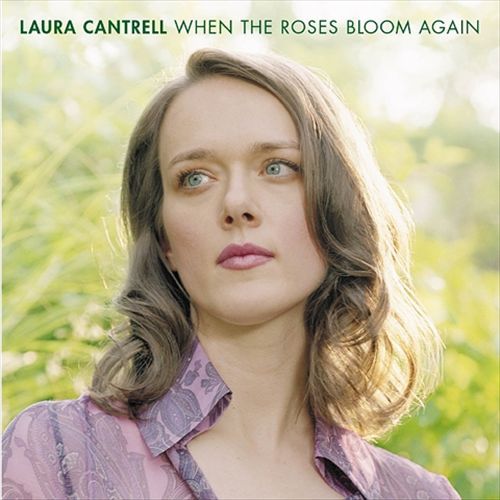
I don’t actually know. I did some research and there aren’t any reliable stats that I could find. There is a lot of anecdotal discussion on the topic. The consensus seems to be that most musicians are not getting by with music as their only, or even their primary source of income. I don’t think anyone is surprised by that.
One Reddit user said less than 5% of musicians derive all or most of their income from music. He didn’t offer a source or anything, but he seemed very authoritative in his post. And then after a few more Google searches I lost interest and listened to more Laura Cantrell.
Laura Cantrell’s story is what got me pondering how indie musicians go about juggling making art with the necessity of, you know, making a living to survive. In 2003, after two critically acclaimed albums, including a tour opening for Elvis Costello all across the United States and Europe, Cantrell was at a similar crossroads. Laura had risen to the position of Vice President of Equity Research at Bank of America in New York. Yes, you heard me right. Laura Cantrell was working as a corporate executive and touring with Elvis Costello at the same time. She actively worked on the road during the day and then performed for thousands of people each night.
Before we get further into what led up to this point and what came after, let’s hear a song from Laura Cantrell’s debut album, Not the Tremblin’ Kind. Here’s the title track.
youtube
That was Not the Tremblin’ Kind from Laura Cantrell’s first album back in the year 2000.
Laura grew up in Nashville. She played a little bit of piano and sang in the church choir, but did not get into performing music and playing out until her college years. As a teenager she worked at the Country Music Hall of Fame as a tour guide. This job, in addition to the influence of the diverse musical tastes of her parents, sparked an interest in traditional music, particularly classic country. She also became somewhat of an aficionado in this area.
This love and knowledge of the early days of country music would help differentiate Laura as she honed her sound and selected her songs while developing as a performer down the road. Before that, however, it would make her an excellent college radio DJ and later an even more excellent DJ at WFMU, one of the best and longest running free-form radio stations in the country. Out of the New Jersey/New York area, WFMU is awesome to this day, with a wide array of programming where DJs still get to play whatever they want.
Laura is my favorite kind of DJ, and the kind that has been dwindling in numbers since the rise of music downloads, which then gave way to streaming and endless algorithms. First off, she’s knows her stuff. She carefully curates each shows, and thoughtfully sequences each set within every episode. She packs in history, context and story to create something that transcends your typical weekend-afternoon-background-radio-soundtrack. I know this show is about under appreciated bands and artists, but Laura Cantrell’s contributions to radio deserve to be heard by more people. You can find her past WFMU shows, called The Radio Thrift Shop, archived on the WFMU website. You can hear her present day on her “States of Country” radio show on the Gimmie Country radio app, or on her SiriusXM George Harrison themed show “Dark House Radio,” on The Beatles station.
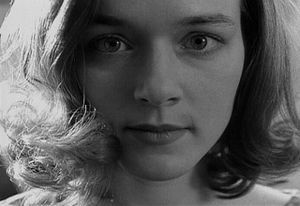
This concludes the part of the show where I babble my enthusiastic endorsement of Laura Cantrell’s past and present radio career.
Laura began playing music with others in college at Columbia University. Her jam pals included Andrew Webster, future member of Tsunami Bomb and Mac McCaughan, who would go on to form Superchunk and Portastatic + found Merge Records. The friends would call their band Bricks. A lo-fi, mostly apartment recording projects that played sporadic gigs over the years.
Here’s the Brick’s song, The Girl with the Carrot Skin.
Living in New York, Laura began playing guitar and writing her own songs. She also plucked some choice classic country finds and incorporated them into her own performance catalog. One day she met a guy named John who asked her to sing on a song that would appear on his band’s next major label release for Elektra.
youtube
That’s The Guitar from They Might Be Giant’s 1992 album, Apollo 18. John Flansburgh asked Laura to sing on that recording. It was the first time Laura recorded in a professional studio. John Flansburgh became a fan of Laura’s music and released her first recorded material as part of his Hello CD of the Month Club, an EP called The Hello Recordings in 1996.
Let’s hear another Laura Cantrell song. This time one that she wrote with Amy Allison. From Laura Cantrell’s 2014 album, No Way There From Here, this is All the Girls are Complicated.
youtube
That was Laura Cantrell with All the Girls Are Complicated from her last full length release, No Way There From Here. Actually, that was her last full album of new material, but Laura did release an album a few years back of her BBC recordings on John Peel’s radio show. That album is called At the BBC: On Air Performances and Recordings 2000-2005.
I mentioned earlier that Peel was a big fan. Again, here’s John Peel’s full quote about Laura’s first album, Not the Tremblin’ Kind: "[It is] my favourite record of the last ten years and possibly my life.” Having the endorsement of the legendary English disc jockey was enough to give Cantrell wider exposer throughout the UK. She developed a loyal fanbase through regular appearances on Peel’s show, as well as US and European tours, including the opening slot for Elvis Costello. Which brings us back to Laura’s fork in the road. Before her third album, Laura decided to walk away from the corporate gig. She was excited to focus on music full time, but a little worried about walking away from the security of a successful career she liked and position she was good at.
From a spotlight CNN Business did on Cantrell in 2004:
“For several months until she finally quit, Cantrell balanced her day job with a growing schedule of rehearsals, gigs, recordings and publicity. On the day she appeared on the Conan O'Brien show she was at her desk until lunchtime.”
“And while life as a professional musician is a dream come true, Cantrell still looks back with fondness on more than a decade on Wall Street.”
“‘I came into Wall Street with a very typical kind of stereotype that it was all going to be people just obsessed with money. What I found was that there were just loads of interesting people who were a lot like myself, just doing it as a job and who had lives that were full of other things.’
‘So I miss some of the contact with people I met. Ironically it was a very supportive environment for me as an artist.’”

Laura’s first two albums were released on the the indie label Diesel Only, which was founded by her husband, Jeremey Tepper. Her third album was released by Matador Records, also an indie label, but with an impressive roster that included Liz Phair, Modest Mouse, Pavement and Sleater-Kinney. Released in 2005, Humming By the Flowered Vine continues Cantrell’s classic country sound, but with some evolved production and arrangements. Laura’s mastery as a song selector gets more and more impressive. This album includes a cover of a rare, unreleased Lucinda Williams song form 1975 called, “Letters.”
In fact, Lucinda Williams herself was thoroughly impressed with Laura’s cover of “Letters.” She attributes the cover to bolstering her confidence to go back through her earlier material and look for her own buried treasures.
From Blurt Magazine:
“The inspiration for her journey through the past struck when she heard Laura Cantrell’s version of her song ‘Letters,’ which Williams wrote around 1975 and recorded on a demo but never officially released. Explains Williams, ‘She got a copy from a mutual friend and did a beautiful, really sweet version of it that made me think wow, she brought this early song back to life, maybe I should go back and review some of my old stuff. I’ve got all these tapes of old little songs, but I never thought they were good enough to do anything with.’”
You know you’re an ace at finding under appreciated gems when you surprise Lucinda Williams by helping her discover one of her own songs. Let’s hear Laura Cantrell’s version of Letters.
youtube
That was Laura Cantrell with Letters from her 2005 release Humming by the Flowered Vine.
In 2008, Laura returned with an EP called, Trains and Boats and Planes with 9 songs about… trains, and boats and planes. It’s very good and it includes a fun cover of New Order’s Love Vigilantes.
Throughout this time, Laura continued her radio show. She also started a family and became co-owner and co-operator of Diesel Only Records.
In this clip from an interview with Face Culture, you can really hear Laura’s passion for country music and its roots. She talks about the importance of country’s influence on rock n’ roll, and how each artist is inspired by something great that came before.
And Laura continuously pays tribute to the greats that came before through her radio show and on her own records. In 2011, Laura released a tribute to Kitty Wells called “Kitty Wells Dresses: Songs of the Queen of Country Music.” The collection includes nine Kitty Wells covers and one original, the title track, Kitty Wells Dresses.
From the Washington Post:
Here’s Laura talking about the inspiration for the album.
“Kitty wore very typical stage clothes for women who performed at barn dances and in early country music shows,” says Cantrell, a Nashville-born, New York-based country singer and host of an old-time music show on the legendary radio station WFMU.
“They were these frilly gingham dresses, non-threatening and cutesy. It became this uniform that all the women of the era wore, and I always thought it was a great metaphor for how you can underestimate the strength of the person or the value of the artist underneath.”
youtube
That was the song Kitty Wells Dresses from Laura Cantrell’s tribute album of the same name, released in 2011. Wells was the oldest living member of the Country Music Hall of Fame upon its release. She was also the first woman inducted into the hall. Cantrell met and talked to Kitty about her album. She said that Kitty asked which songs were selected and as Laura began calling them out, Kitty would sing each one.
I’ve mentioned all of Laura’s past and present DJ efforts, all of which I’ll link to on my website, brokenbuttons.com. Laura also continues to release music. She had planned a host of special activities for the 20th anniversary of Not the Tremblin’ Kind, which had to be put on hold due to all things 2020.
You can contribute to Laura’s IndigGoGo campaign to help fund her new digital singles collection that she’s already started releasing. The plan is to release six singles with an A and a B side, all working with different musicians and producers. I’d recommend the $50 Kitty Wells Dresses Pack, which gets you access to the digital singles as their released, a signed CD copy of both the singles collection and the Kitty Wells Dresses album, as well as a copy of Laura's essay on Kitty and Patsy Cline from the book "Rock and Roll Cage Match: Music's Greatest Rivalries"

Laura Cantrell is the rare performer whose work is deeply rooted in its original source material while still feeling fresh and exciting. Laura’s radio shows can be described the same way. A buried treasure unearthing buried treasure and taking the old and classic and making it new and lasting and so much sweeter. Laura Cantrell.
References and other stuff to check out:
Laura’s Indiegogo campaign for her digital singles series
The Radio Thrift Shop - Laura’s prior radio show. You can stream past episodes and check out her playlists
Gimmie Country, where Laura hosts her current show States of Country. New episodes air 3:00 Monday EST. Laura chats during the show with listeners in the app.
Darkhorse Radio on Sirius XM. Laura’s other show dedicated to George Harrison. New episodes air Thursday at 3:00.
John Peel wiki entry about Laura
TMBG wiki entry about Laura
A Wall Street journal feature on Laura
An NPR feature on Laura
A CNN Business Week feature on Laura
Stereogum archive of the Quit Your Day Job feature
#Laura Cantrell#country#classic country#americana#altcountry#Kitty Wells#They Might Be Giants#TMBG#Superchunk#Dolly Parton#Loretta Lynn#Patsy Cline#Emmylou Harris#Lucinda Williams#WFMU#States of Country#Darkhorse Radio#The Beatles#The Radio Thrift Shop#DJs#John Peel#Spotify#Mixcloud#music podcast#music history
3 notes
·
View notes